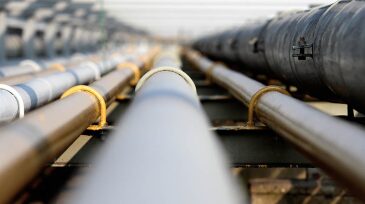Safety
This study ascertains the capital expenditure and operating expenditure associated with the reuse of existing facilities, specifically regarding a carbon capture and storage project being prepared in South Korea.
Sponsored
Advance your career with the new Pipeline Engineering Program at the Technical University of Leoben, a 5-month course combining on-campus and online learning, integrating industry expertise, engineering practice, and future-ready skills for professionals in oil, gas, and emerging energy systems.
A resilience-based approach to safety was the focus of a panel of experts at the 2025 SPE Annual Technical Conference and Exhibition in Houston.
-
This paper explores whether factors other than the driver can be influenced to increase overall driving safety. This is an application of the risk management approach of using fundamental design and layout to reducing the likelihood and severity of incidents.
-
Safety culture can be distilled into nine characteristics predictive of safety outcomes. To improve safety performance and create lasting change in organizational culture, leaders can focus on developing 10 safety-specific leadership capabilities.
-
DNV’s new training center will run full-scale experiments for a joint industry project aimed at investigating cost-efficient explosion load descriptions for process areas.
-
When panels in an instrument equipment shelter kept tripping and the occasional smell of H2S led to an investigation of the rationale. Although a rare occurrence, this paper presents a strategy for prevention through careful site selection.
-
For the more than 7 billion people on our planet, every measure of quality of life, from gross domestic product per capita and infant mortality, to education levels and access to clean water, is correlated to the consumption of modern fuels, including oil and gas.
-
Analyzing accidents can demonstrate how much they have in common with everyday operations. Business principles and sound engineering practices can be at odds.
-
Despite a number of recent and high-profile jetliner crashes, commercial aviation has entered into a new era of safety. There is a lot the oil and gas industry can learn from their success.
-
This paper presents a technique that results in an occupied structure being located properly and constructed to reduce the risk of harm to the occupants to a tolerable level.
-
Hybridization of power systems is known to increase energy efficiency and reduce emissions, with lower fuel consumption. This paper reviews available technologies to serve as a selection guide for planning such systems.
-
Companies have developed a greater understanding of the causes and effects of long-term fatigue on workers by adapting risk-based approaches to fatigue management. But it is important to incorporate work-site causes of fatigue.













